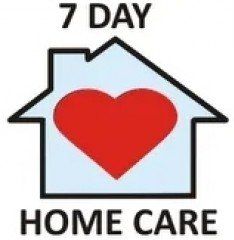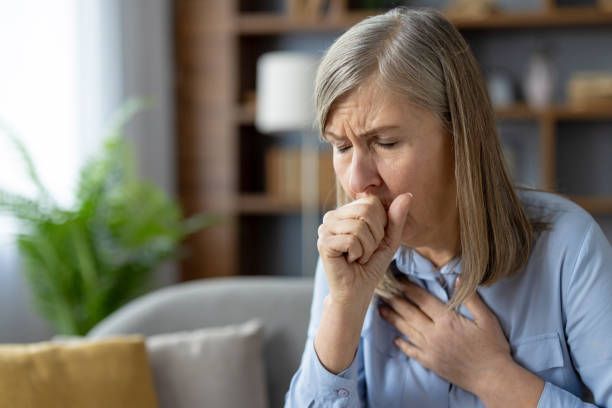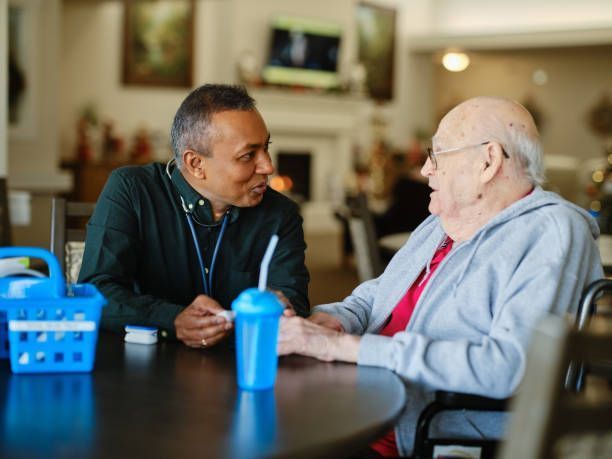
Providing the Same Level
of Care We Expect for
Our Own Family
(516) 408-0034
There is Urgency in Recognizing the Signs of Stroke

A stroke, medically referred to as a cerebrovascular accident (CVA), is a sudden and severe disruption of blood flow to the brain, leading to the rapid onset of neurological dysfunction. There are two primary types of strokes: ischemic and hemorrhagic. Ischemic strokes, which constitute the majority of cases, occur when a blood clot or plaque buildup obstructs a blood vessel supplying the brain, resulting in reduced blood flow. On the other hand, hemorrhagic strokes result from the rupture of a weakened blood vessel within the brain, leading to bleeding and increased intracranial pressure. The consequences of both types are profound, causing damage to brain tissue and impeding the normal functioning of affected areas. As the brain relies on a constant and well-regulated blood supply for oxygen and nutrients, the abrupt interruption in blood flow during a stroke triggers a cascade of events, including inflammation and cell death. The severity and location of the brain damage determine the extent of the neurological deficits, such as paralysis, speech impairment, or cognitive dysfunction, that individuals may experience as a result of a stroke. Recognizing and responding promptly to the signs of a stroke are crucial to mitigating these debilitating effects and improving the chances of a successful recovery.
Understanding Stroke:
A stroke, also known as a cerebrovascular accident (CVA), can be categorized into two main types: ischemic and hemorrhagic. Ischemic strokes occur when a blood clot obstructs a blood vessel in the brain, while hemorrhagic strokes result from the rupture of a blood vessel, causing bleeding into the brain. Both types can lead to significant impairment of brain function.
Ischemic strokes, constituting approximately 80% of all stroke cases, are characterized by a sudden interruption of blood supply to a specific part of the brain due to a blockage in a blood vessel. This blockage is typically caused by a blood clot or atherosclerotic plaque formation. Thrombotic strokes occur when a blood clot forms within the arteries supplying the brain, often in areas already narrowed by atherosclerosis. Embolic strokes, on the other hand, happen when a clot forms elsewhere in the body, like the heart, and travels to the brain, lodging in a smaller blood vessel. The sudden reduction in blood flow deprives brain cells of oxygen and essential nutrients, triggering a cascade of events that lead to cellular damage and, if not promptly addressed, irreversible brain injury. Ischemic strokes are often associated with risk factors such as hypertension, diabetes, smoking, and high cholesterol. Rapid intervention, typically involving the administration of clot-busting medications like tissue plasminogen activator (tPA), is crucial for restoring blood flow and minimizing the long-term neurological consequences associated with ischemic strokes.
Hemorrhagic strokes, comprising approximately 20% of all stroke cases, manifest as a result of the rupture of a blood vessel within the brain, leading to bleeding in and around brain tissues. This rupture can occur due to various factors, including hypertension, aneurysms, or vascular malformations. The sudden release of blood into the brain creates increased intracranial pressure, causing compression and damage to surrounding tissues. There are two primary types of hemorrhagic strokes: intracerebral hemorrhage, where bleeding occurs directly into the brain tissue, and subarachnoid hemorrhage, involving bleeding into the space between the brain and its protective covering. The consequences of hemorrhagic strokes are often more severe and immediate than their ischemic counterparts, as the accumulating blood can lead to swelling and further compression of brain structures. Emergency medical intervention is critical to address the underlying cause, control bleeding, and alleviate pressure within the skull. Treatment may involve surgery, coiling of an aneurysm, or other specialized procedures, and the long-term outcomes depend on the extent of the hemorrhage and the effectiveness of the medical response.
Identifying Signs of Stroke:
Recognizing the signs of a stroke is critical for swift action. The acronym FAST helps in identifying common stroke symptoms:
- Face Drooping: One side of the face may droop or become numb.
- Arm Weakness: One arm may be weak or difficult to lift.
- Speech Difficulty: Speech may be slurred or difficult to understand.
- Time to Call 911: If any of these symptoms are present, it's crucial to call emergency services immediately.
Other signs of stroke:
In addition to face drooping, speech problems, and arm weakness, there are other signs and symptoms that may indicate someone has suffered a stroke. It's important to be vigilant and recognize these potential warning signs, as prompt identification can significantly impact the outcome of stroke treatment.
- Sudden Severe Headache: A sudden, severe headache with no known cause could be a sign of a stroke, especially if it is accompanied by other symptoms.
- Trouble Walking: Difficulty with coordination, balance, or sudden onset of unexplained dizziness or loss of coordination can be indicative of a stroke.
- Vision Problems: Sudden vision changes, such as blurred or decreased vision in one or both eyes, or double vision, may be a symptom of a stroke.
- Confusion or Trouble Understanding: A person who has suffered a stroke may experience confusion, difficulty understanding speech, or have trouble comprehending and responding appropriately to conversations.
- Numbness or Tingling: Sudden numbness or tingling, especially on one side of the body, face, or extremities, can be a sign of stroke.
- Difficulty Swallowing: Stroke can affect the muscles responsible for swallowing, leading to difficulty in swallowing or a sudden onset of choking.
It's crucial to remember the FAST acronym (Face, Arms, Speech, Time) for quick identification of stroke symptoms, but being aware of these additional signs can provide a more comprehensive understanding of potential stroke manifestations. If any of these symptoms are observed, seeking immediate medical attention is imperative.
Critical Steps to Take if You Suspect a Stroke:
- Call Emergency Services: Dial 911 immediately.
- Note the Time: Record when symptoms first appeared, as timing is crucial for treatment decisions.
- Do Not Ignore Symptoms: Even if symptoms seem to improve, seeking medical attention is essential.
Importance of Timing and a Sense of Urgency:
The importance of timing in responding to a stroke cannot be overstated, as every passing minute directly influences the potential outcomes and recovery of an individual. In the context of stroke, the phrase "Time is Brain" underscores the critical nature of swift action. When a stroke occurs, brain cells are deprived of oxygen, and irreversible damage begins to unfold. Early intervention, particularly within the first few hours, is crucial for administering treatments such as thrombolytic therapy, which can dissolve blood clots in ischemic strokes. Additionally, the effectiveness of endovascular procedures and other interventions diminishes as time elapses. The sooner medical attention is sought, the greater the likelihood of minimizing brain damage, preventing long-term disabilities, and improving the overall prognosis. Recognizing and responding promptly to the signs of a stroke by calling emergency services immediately can be a decisive factor in preserving brain function and enhancing the quality of life for individuals affected by this medical emergency.
Stroke Risks:
Several risk factors contribute to the likelihood of experiencing a stroke, emphasizing the importance of preventive measures and health management. Hypertension, or high blood pressure, stands out as a primary risk factor, as it can damage arteries over time, making them more susceptible to blockages or ruptures. Smoking is another significant contributor, as the chemicals in tobacco can accelerate the formation of arterial plaque and reduce blood flow. Diabetes, characterized by high blood sugar levels, increases the risk of stroke by promoting atherosclerosis and damaging blood vessels. High cholesterol levels contribute to the buildup of fatty deposits in arteries, narrowing the vessels and potentially leading to clots. Age also plays a role, as the risk of stroke increases with advancing years. Additionally, a family history of strokes, a personal history of heart disease, and lifestyle factors such as poor diet, physical inactivity, and excessive alcohol consumption can further elevate the risk. Understanding and addressing these risk factors through lifestyle modifications, medication, and regular medical check-ups are essential in stroke prevention strategies.
Survival and Possible Disabilities After Surviving a Stroke:
Survival rates for stroke vary depending on factors such as the type of stroke, the severity of the condition, and the promptness of medical intervention. Generally, the survival rate for stroke has improved over the years due to advances in medical care and increased awareness. According to statistics, a significant percentage of individuals who experience a stroke survive. However, the outcomes can vary:
- Ischemic Stroke: Survival rates are generally higher for ischemic strokes compared to hemorrhagic strokes. Thrombolytic therapy, which dissolves blood clots, and other interventions have contributed to improved outcomes for ischemic stroke patients.
- Hemorrhagic Stroke: Hemorrhagic strokes tend to have a higher mortality rate due to the bleeding in the brain. However, survival rates have also improved with advancements in medical treatments and interventions.
- Prompt Medical Attention: The key to better survival and recovery is seeking prompt medical attention. Quick intervention, such as administering clot-busting medications or surgical procedures, can significantly improve outcomes.
It's important to note that even with survival, stroke survivors may face various challenges, including disabilities, depending on the extent and location of the brain damage. Rehabilitation and ongoing medical care play critical roles in helping survivors regain functionality and improve their quality of life after a stroke. Always consult with healthcare professionals for the most accurate and up-to-date information on stroke survival rates.
Survivors of a stroke may face a range of disabilities that can significantly impact their daily lives and independence. Common disabilities resulting from a stroke include hemiparesis or hemiplegia, which involves weakness or paralysis on one side of the body. This often leads to challenges in mobility, coordination, and performing daily tasks. Speech and language difficulties, known as aphasia, may also occur, affecting a person's ability to communicate effectively. Cognitive impairments, such as memory loss, difficulty concentrating, and changes in problem-solving skills, can pose additional challenges. Emotional and psychological effects, such as depression and anxiety, are common after a stroke. Rehabilitation, including physical therapy, speech therapy, and occupational therapy, plays a crucial role in helping survivors regain functional abilities and adapt to these disabilities. The extent and nature of disabilities vary widely among individuals, emphasizing the importance of personalized and comprehensive post-stroke care to enhance overall quality of life.
7 Day Home Care emphasizes the importance of awareness and quick action when it comes to identifying signs of stroke. Understanding the types, causes, and risks, along with taking prompt steps if a stroke is suspected, can make a significant difference in the outcome. By recognizing the signs and acting swiftly, individuals can contribute to a faster and more effective recovery for themselves or their loved ones. The information provided on recognizing signs of stroke is for general awareness purposes only and should not substitute professional medical advice; individuals experiencing symptoms should seek immediate medical attention and consult with healthcare professionals for accurate diagnosis and guidance.
7 Day Home Care underscores the urgency of recognizing the signs of stroke, emphasizing that time is of the essence in ensuring optimal outcomes for stroke survivors. Swift identification and immediate response to symptoms such as face drooping, speech problems, and arm weakness can significantly impact the success of subsequent medical interventions. As a provider of specialized in-home stroke support services across Manhattan, Queens, Brooklyn, Nassau County, and Suffolk County in New York, we are acutely aware of the critical role timely care plays in the recovery journey. Our dedicated team is committed to offering comprehensive and personalized support to stroke survivors within the familiar and comforting environment of their homes. By promoting awareness and rapid response to stroke symptoms, we aim to contribute to improved overall outcomes and the well-being of individuals facing the challenges of stroke in the communities we serve. Contact 7 Day Home Care today at 516-408-0034 to learn more about our affordable and comprehensive home care services in NYC and Long Island, New York.
Brian Callahan
7 Day Home Care










Hours of Operation
We are Open 24 Hours a Day
7 Days a Week
All Rights Reserved | 7 Day Home Care | Created by DAR Web Consulting